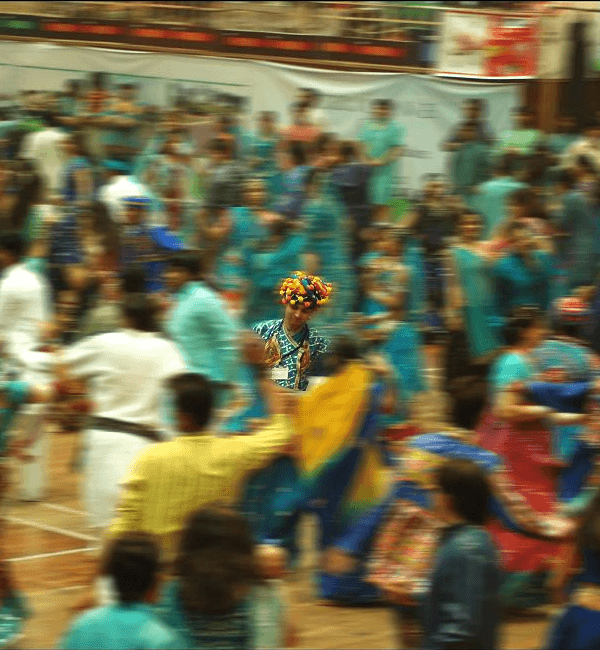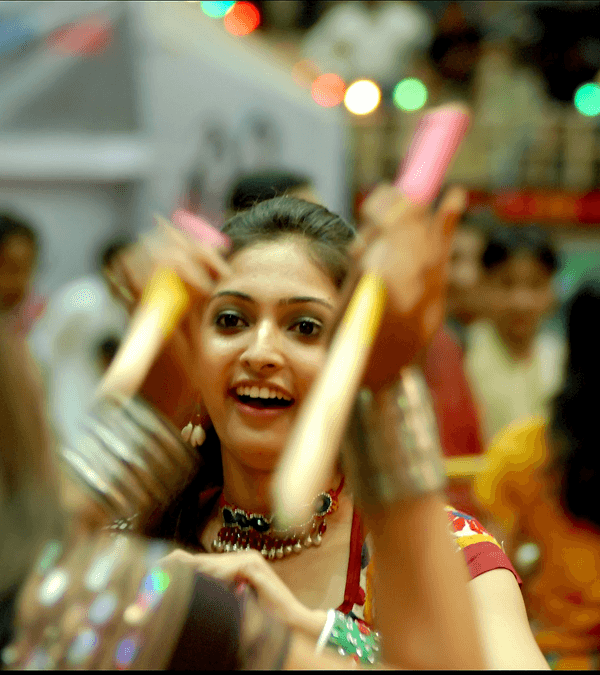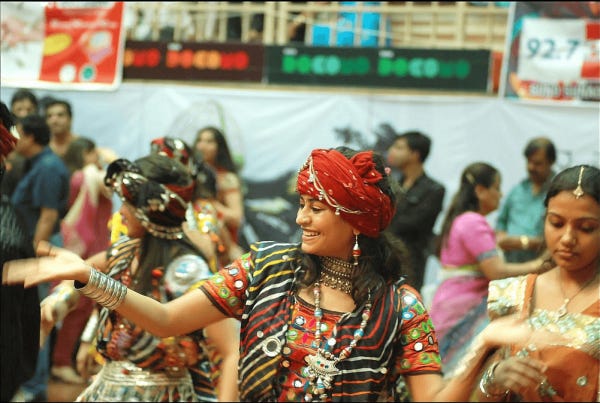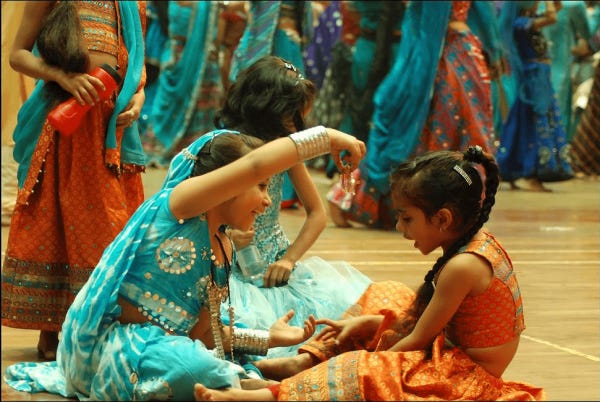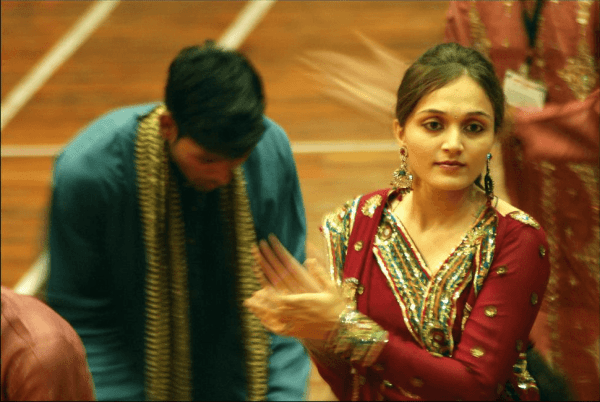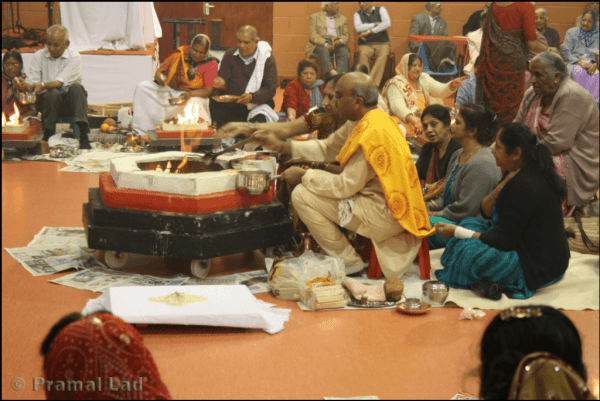Navratri: Celebration of the Devi, the Feminine Divine
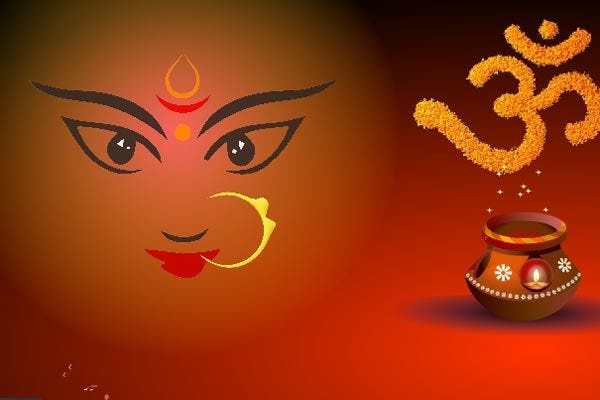
Femininity and Masculinity are taken as two qualities of the existence in Hinduism and in most Eastern traditions. Eastern mystics called it Yin and Yang. In Hinduism, this is posited as Purush and Prakriti – and the highest of all beings – Shiva – is said to be an Ardhanareshwar. Half man and half woman. But he is called so not because ONLY he was a combination of Feminine and Masculine; but because in him the two qualities were completely balanced and more importantly, he was the first to realize them in him.
As Sadhguru Jaggi says “That you are a man is a fact, but that you are both man and a woman is the truth”. For, it took one half of a man and one half of a woman to make a complete you.
Navratri – Manifesting the feminine Divine
Femininity has been described as the flowering aspect of the creation. The nurturing, the art, the music, the love, the blossoming. Masculinity is the survival aspect. The Fight, the Violence, the Economics, the Production and Manufacturing, the ability to stand your ground.
Whatever is the highest virtue in a society, that becomes the idea of the Divine. In the early Nature-oriented pagan societies, everything from Food to Earth to Rivers were called Divine. As long as Femininity is considered high enough to be divine, the nurturing and the blossoming will never go away from society. When openly or intrinsically, the Masculine rules over and destroys the Femininity, only Survival becomes the sine qua non of the society. Since the advent of the Abrahamic religions, the concept of Femininity as Divine has been systematically and deliberately destroyed.
It is only in India today that Feminine as Divine is still alive as a concept and a practice. Unfortunately, the religious aspect has been bastardized by people who look at God as a mere “Deal Maker”. I will do “this” for you, O’God.. so you gotta do “that” for me. Devotion for the aspects of our life which were aligned with Divine has all but ceased. So, despite the fact that Goddess, the Feminine as Divine, is still alive in concept and practice in many places; Women are mistreated. For, it’s not that there is a special disregard for the Devi in India, but there is a complete disregard for the Divine as the life force itself!
It is in this context that Navratri – the Nine Nights of the Devi – assumes importance. This is the time of celebrating the Devi. The Goddess. The Divine Feminine! Today, October 5th, starts the 9 nights of the Navratri Celebrations!
Sadhguru discusses the importance and significance of Navratri in detail.
Sadhguru has also created a special deity of the Devi, the Linga Bhairavi. Those who are devoted to the Devi, the Bhairavi – can approach the Devi, in a way that will help them connect to the deepest dimensions of existence.
For those who wish to connect with Linga Bhairavi, a simple but powerful Navaratri sadhana is being offered for ladies, to experience Devi’s Grace at home. The sadhana is to be practiced every day from 5th to 13th October, by doing the following:
Chant a minimum of three cycles of the “Jai Bhairavi Devi”stuthi in front of a photo of Devi, Linga Bhairavi Gudi, Linga Bhairavi Yantra or Avighna Yantra. It is advisable to chant eleven cycles. (One cycle is the recitation of all 33 names of the Devi, as listed below)
Make an offering. There are no restrictions on what can be offered.
Navratri Celebrations
Above all, this is a time of celebration. Unbridled celebration of the creation and the creator. The Mother. The Shakti.
Personally, in my life as I look at the times I have spent during these Nine Days and Nights, I found Gujarat to be the most beautiful place to be in. Every night, celebrations start as Garba dhol (drum) starts off in almost every other locality and colony. It brings people out in their best dresses and makeup. People dance away through the night to the wee hours of the morning!
Pictures from Navratri
Here are some beautiful pictures of various Navratri celebrations.
Image Credit: Navratri Utsav/sheetal saini
Conclusion
Navratri is a great fun time amongst the Indians. The feminine energy is celebrated and experienced by many. It is a testament to the inclusivity of the Hindu/Dharmic culture that feminine is worshipped and revered as Divinity. Navratri is that special time of the year.
Image Credit: Atham Havan & Yagna / Pramal





